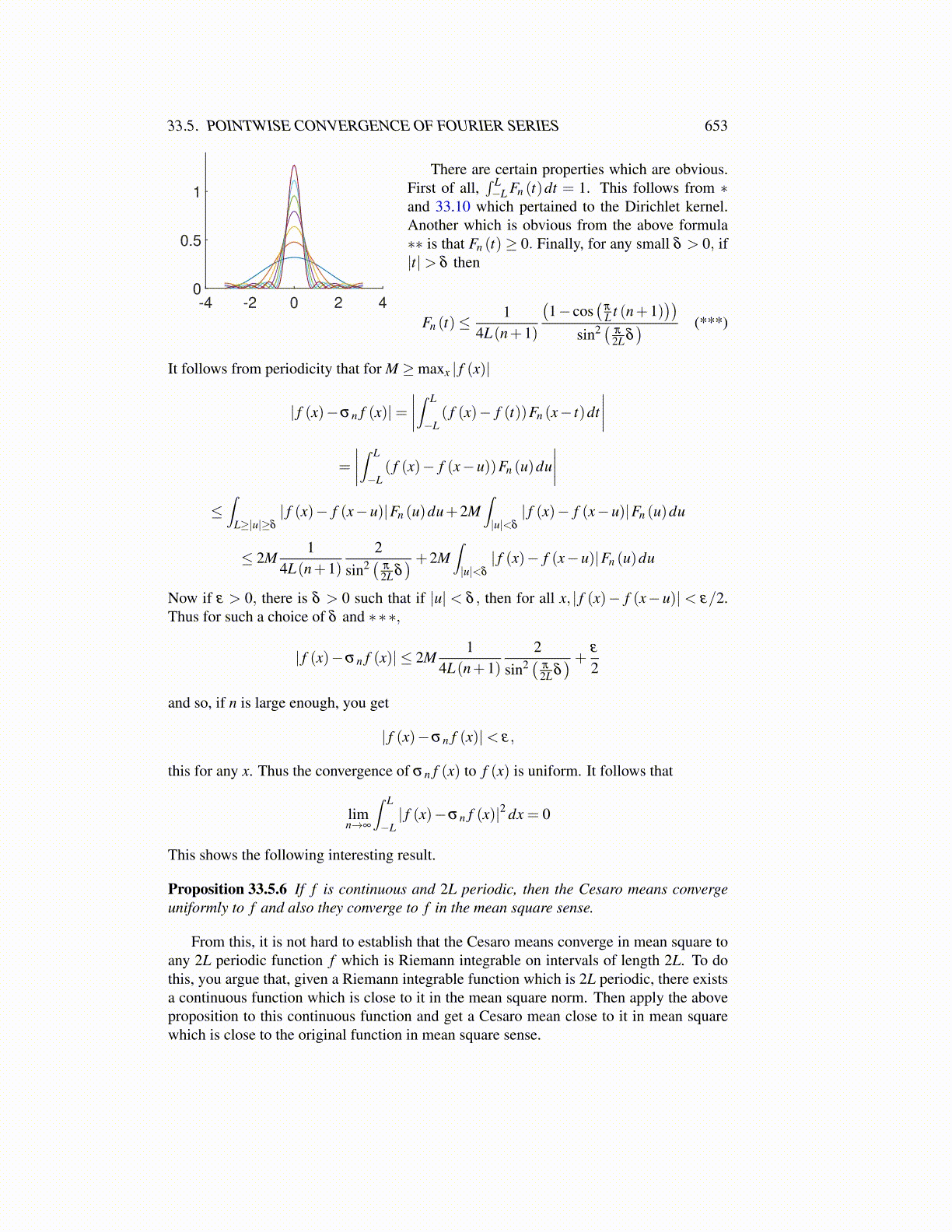
33.5. POINTWISE CONVERGENCE OF FOURIER SERIES 653
-4 -2 0 2 40
0.5
1
There are certain properties which are obvious.First of all,
∫ L−L Fn (t)dt = 1. This follows from ∗
and 33.10 which pertained to the Dirichlet kernel.Another which is obvious from the above formula∗∗ is that Fn (t)≥ 0. Finally, for any small δ > 0, if|t|> δ then
Fn (t)≤1
4L(n+1)
(1− cos
(π
L t (n+1)))
sin2 ( π
2L δ) (***)
It follows from periodicity that for M ≥maxx | f (x)|
| f (x)−σn f (x)|=∣∣∣∣∫ L
−L( f (x)− f (t))Fn (x− t)dt
∣∣∣∣=
∣∣∣∣∫ L
−L( f (x)− f (x−u))Fn (u)du
∣∣∣∣≤∫
L≥|u|≥δ
| f (x)− f (x−u)|Fn (u)du+2M∫|u|<δ
| f (x)− f (x−u)|Fn (u)du
≤ 2M1
4L(n+1)2
sin2 ( π
2L δ) +2M
∫|u|<δ
| f (x)− f (x−u)|Fn (u)du
Now if ε > 0, there is δ > 0 such that if |u| < δ , then for all x, | f (x)− f (x−u)| < ε/2.Thus for such a choice of δ and ∗∗∗,
| f (x)−σn f (x)| ≤ 2M1
4L(n+1)2
sin2 ( π
2L δ) + ε
2
and so, if n is large enough, you get
| f (x)−σn f (x)|< ε,
this for any x. Thus the convergence of σn f (x) to f (x) is uniform. It follows that
limn→∞
∫ L
−L| f (x)−σn f (x)|2 dx = 0
This shows the following interesting result.
Proposition 33.5.6 If f is continuous and 2L periodic, then the Cesaro means convergeuniformly to f and also they converge to f in the mean square sense.
From this, it is not hard to establish that the Cesaro means converge in mean square toany 2L periodic function f which is Riemann integrable on intervals of length 2L. To dothis, you argue that, given a Riemann integrable function which is 2L periodic, there existsa continuous function which is close to it in the mean square norm. Then apply the aboveproposition to this continuous function and get a Cesaro mean close to it in mean squarewhich is close to the original function in mean square sense.